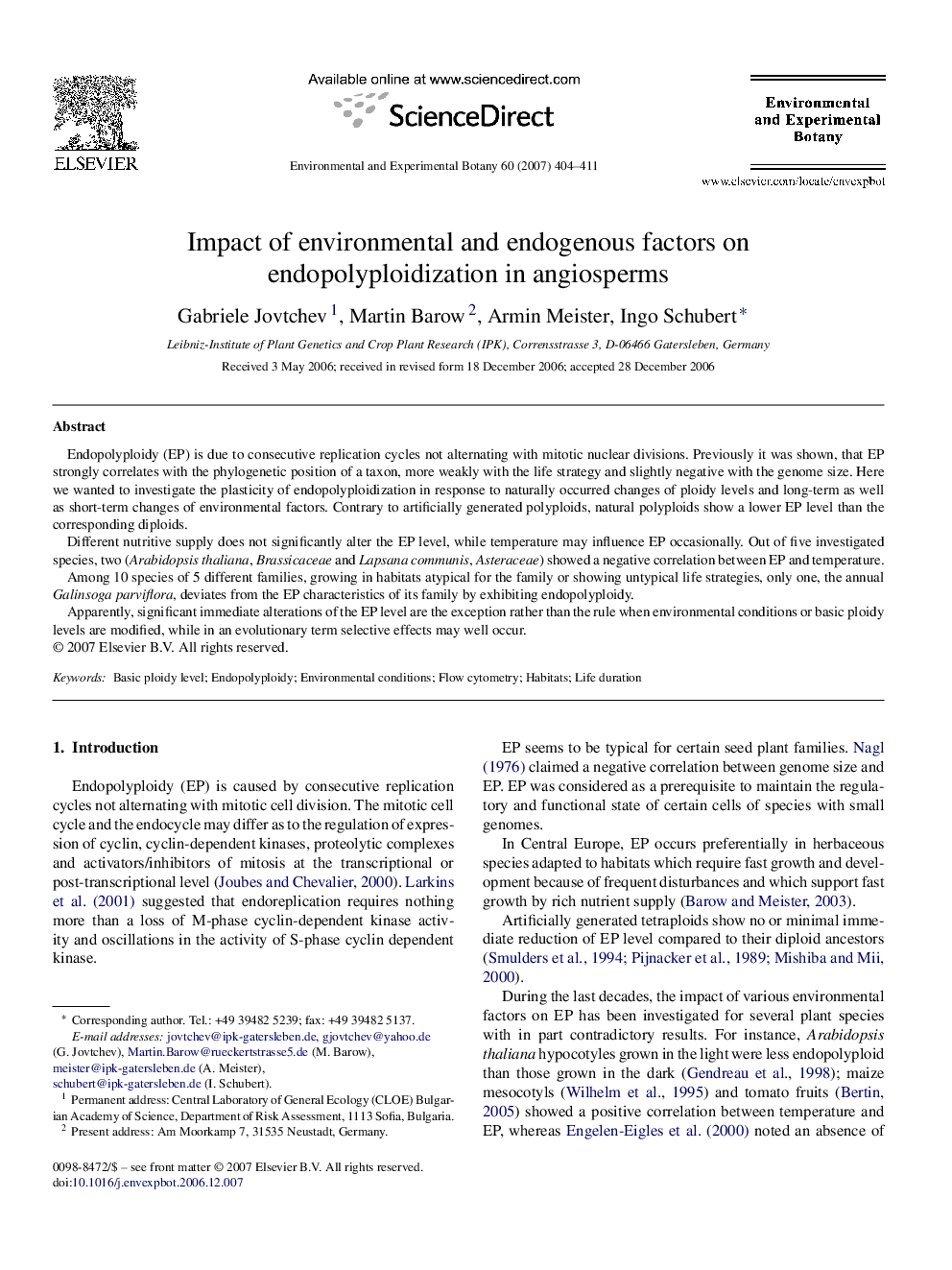| Article ID | Journal | Published Year | Pages | File Type |
|---|---|---|---|---|
| 4555470 | Environmental and Experimental Botany | 2007 | 8 Pages |
Endopolyploidy (EP) is due to consecutive replication cycles not alternating with mitotic nuclear divisions. Previously it was shown, that EP strongly correlates with the phylogenetic position of a taxon, more weakly with the life strategy and slightly negative with the genome size. Here we wanted to investigate the plasticity of endopolyploidization in response to naturally occurred changes of ploidy levels and long-term as well as short-term changes of environmental factors. Contrary to artificially generated polyploids, natural polyploids show a lower EP level than the corresponding diploids.Different nutritive supply does not significantly alter the EP level, while temperature may influence EP occasionally. Out of five investigated species, two (Arabidopsis thaliana, Brassicaceae and Lapsana communis, Asteraceae) showed a negative correlation between EP and temperature.Among 10 species of 5 different families, growing in habitats atypical for the family or showing untypical life strategies, only one, the annual Galinsoga parviflora, deviates from the EP characteristics of its family by exhibiting endopolyploidy.Apparently, significant immediate alterations of the EP level are the exception rather than the rule when environmental conditions or basic ploidy levels are modified, while in an evolutionary term selective effects may well occur.
